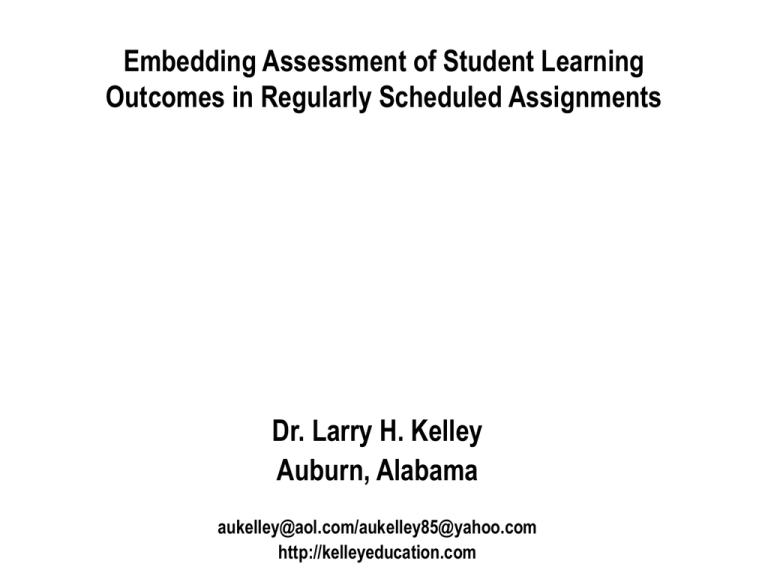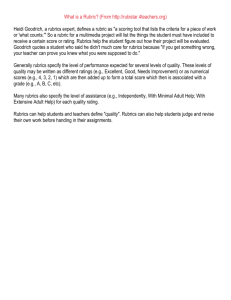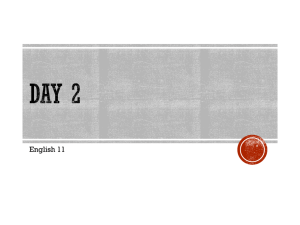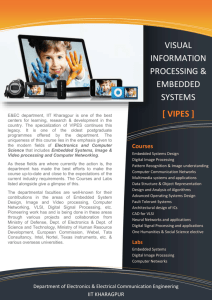Embedding Assessment of Student Learning Outcomes in - NC-NET
advertisement

Embedding Assessment of Student Learning Outcomes in Regularly Scheduled Assignments Dr. Larry H. Kelley Auburn, Alabama aukelley@aol.com/aukelley85@yahoo.com http://kelleyeducation.com Implementing/Assessing Student Learning Outcomes • Develop or revise intended student learning outcomes. These should be results oriented, easily understood and measurable. • Include intended outcomes in all course syllabi. • Utilize intended outcomes to develop a formal annual assessment plan. • Integrate the annual assessment plan with the strategic planning and/or program review cycles. Creating Assessment Plans/Embedding Assessment • Specify intended student learning outcomes. • Select assessment measures and techniques and identify target courses or activities in which assessment will be conducted. • Specify assessment criteria/performance standards/expected results (challenging, yet attainable). Embed measures or identify embedded measures. Evaluate student performance on exams, etc., for course grades. Evaluate student performance on course embedded measures. Embedded Assessment Measures and Techniques # 1 • Measure: Questions Embedded in Exams • Technique: Evaluation of Answers to Common Exam Questions Across Course Sections Embedded Assessment Measures and Techniques # 2 • Measure: Essay, Research Paper, Case Study, Oral Presentation, Lab Report, etc. • Technique: Use of Rubrics, etc., to Evaluate Student Performance in Various Knowledge/Skills Areas Building Performance Assessment Rubrics • Identify the intended student learning outcome. • Specify performance areas to be measured. • Include levels of performance from poorest to best. • Assign ratings to performance levels. • Devise a scoring procedure. See Assessment Rubrics. Creating Simple and Effective Data Reports • Identify intended student learning outcomes. • Specify performance areas, standards or embedded questions for each outcome and enter the level of student achievement. • Footnotes: note the rating scale used for each intended outcome and specify the minimum acceptable rating. See Data Reports. Reporting and Evaluating Assessment Findings • Assessment Criteria/Performance Standards/Expected Results: • Statement of Actual Results: • Problems Encountered (if minimum standards were not met): • Action Taken (such as curricular changes or improvements)/ Recommendations for Further Action: Complete this form for each assessment criteria statement. Assessment Plan Statement - Sample # 1 • Intended Outcome # 1. Students taking coursework in sophomore sociology will show marked improvement in the attainment of key sociological concepts and principles. • Assessment Measures, Techniques, and Target Courses/ Activities. SOC 201 students will complete a pretest and final examination, in which questions related to key sociological concepts and principles have been embedded. Faculty will evaluate students’ answers to the embedded questions across all sections. • Assessment Criteria/Expected Results. Less than 30 percent of students will answer each embedded question correctly on the pretest, whereas 80 percent or more will answer each embedded question correctly on the final examination. See Data Report 1 and Report of Assessment Findings. Assessment Plan Statement - Sample # 2 • Intended Outcomes # 2, 3 and 4. Economics majors will display proficiently in writing, formal speaking and problem solving skills. • Assessment Measures, Techniques, and Target Courses/ Activities. ECON 201 students will complete a case project resulting in a written report and oral presentation. A jury of faculty will evaluate projects using assessment rubrics developed by the program assessment committee. • Assessment Criteria/Expected Results. The average rating of student achievement in each performance area for written and oral communication skills will be 3 or higher on a 4-point scale. The average rating in each performance area for problem solving skills will be 5 or higher on a 7-point scale. Use Rubrics 1, 2 and 3. See Data Report 2. Assessment Plan Statement - Sample # 3 • Intended Outcomes # 5, 6 and 7. Students pursuing a major in management will demonstrate an understanding of the basic concepts of management planning and staff management and competency in written communication skills. • Assessment Measures, Techniques, and Target Courses/ Activities. BUS 313 students will write a detailed paper on the topics of management planning and staff management. Faculty will evaluate papers using an assessment rubric developed by the program assessment committee. • Assessment Criteria/Expected Results. The average rating of student achievement on each performance standard in each knowledge/skills area will be 7 or higher on a scale of 1-10. Use Rubric 4. See Data Report 3. Assessment Plan Statement - Sample # 4 • Intended Outcomes. Undergraduate engineering students will use basic survey techniques, handwriting skills, mathematic calculations, and teamwork to complete group survey projects to a high degree of accuracy. • Assessment Measures, Techniques and Target Courses/ Activities. CE 211 students will complete a series of survey projects, in which they must demonstrate the abilities/skills noted in the intended outcome. Faculty will evaluate the projects using an assessment rubric developed by the program assessment committee. • Assessment Criteria/Expected Results. The average rating of student achievement in each performance area on specified survey projects will be 4 or higher on a 5-point scale. Assessment Plan Statement - Sample # 5 • Intended Outcome. Biology majors will demonstrate expertise in using the standard scientific format to prepare reports of findings. • Assessment Measures, Techniques and Target Courses/ Activities. BIOL 201 students will complete weekly lab projects and prepare reports of findings. Faculty will use an assessment rubric to evaluate randomly selected reports during the fourth, eighth and twelfth weeks. • Assessment Criteria/Expected Results. Students will achieve an average rating of 4 or higher on a scale of 1-7 in each performance area on selected reports. Closing the Loop • Utilize the reports of assessment findings to develop budget priorities, update the department’s strategic plan and/or program review document, and create the annual assessment plan for the following year.





